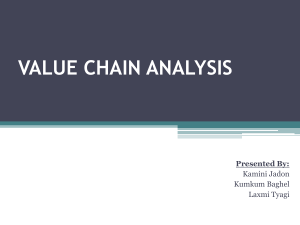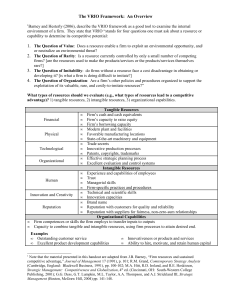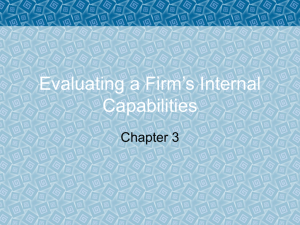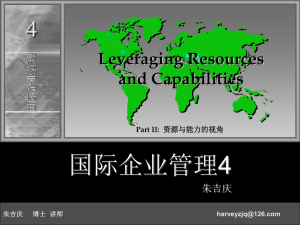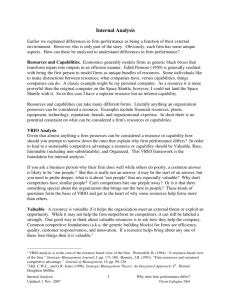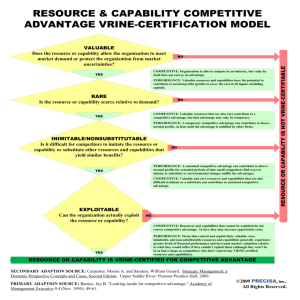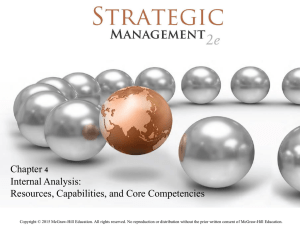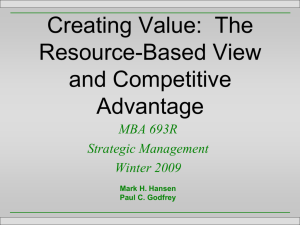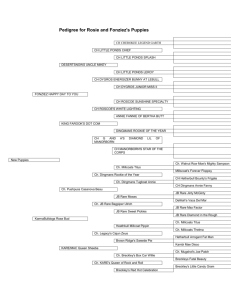VRIO Framework: Competitive Advantage Analysis
advertisement
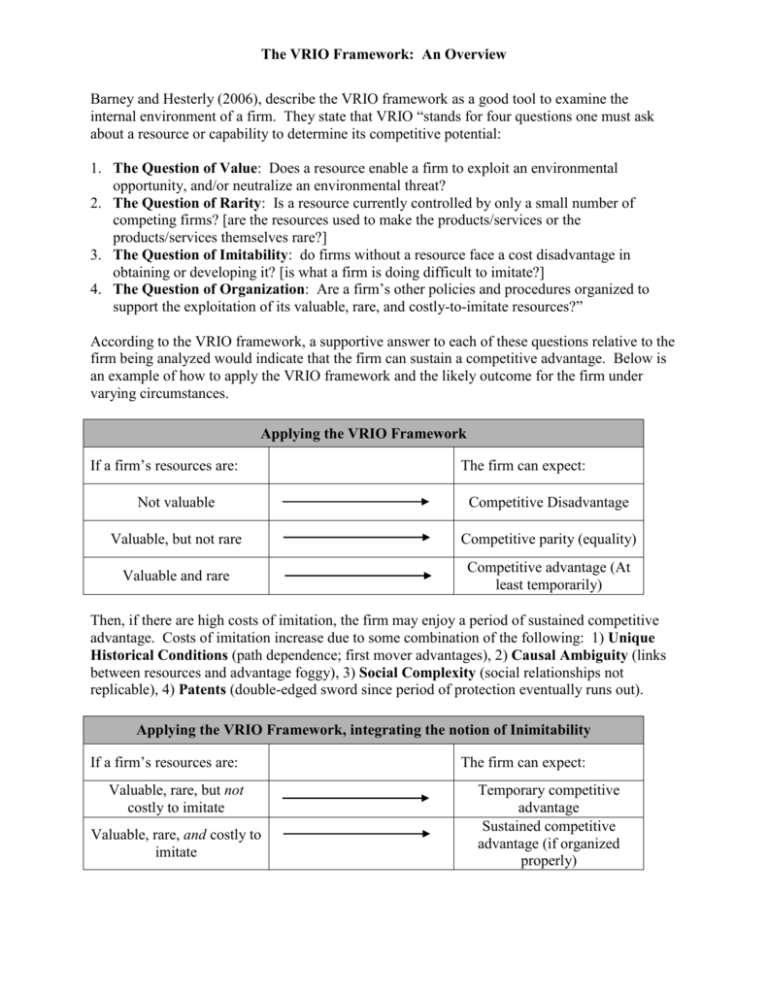
The VRIO Framework: An Overview Barney and Hesterly (2006), describe the VRIO framework as a good tool to examine the internal environment of a firm. They state that VRIO “stands for four questions one must ask about a resource or capability to determine its competitive potential: 1. The Question of Value: Does a resource enable a firm to exploit an environmental opportunity, and/or neutralize an environmental threat? 2. The Question of Rarity: Is a resource currently controlled by only a small number of competing firms? [are the resources used to make the products/services or the products/services themselves rare?] 3. The Question of Imitability: do firms without a resource face a cost disadvantage in obtaining or developing it? [is what a firm is doing difficult to imitate?] 4. The Question of Organization: Are a firm’s other policies and procedures organized to support the exploitation of its valuable, rare, and costly-to-imitate resources?” According to the VRIO framework, a supportive answer to each of these questions relative to the firm being analyzed would indicate that the firm can sustain a competitive advantage. Below is an example of how to apply the VRIO framework and the likely outcome for the firm under varying circumstances. Applying the VRIO Framework If a firm’s resources are: The firm can expect: Not valuable Competitive Disadvantage Valuable, but not rare Competitive parity (equality) Valuable and rare Competitive advantage (At least temporarily) Then, if there are high costs of imitation, the firm may enjoy a period of sustained competitive advantage. Costs of imitation increase due to some combination of the following: 1) Unique Historical Conditions (path dependence; first mover advantages), 2) Causal Ambiguity (links between resources and advantage foggy), 3) Social Complexity (social relationships not replicable), 4) Patents (double-edged sword since period of protection eventually runs out). Applying the VRIO Framework, integrating the notion of Inimitability If a firm’s resources are: Valuable, rare, but not costly to imitate Valuable, rare, and costly to imitate The firm can expect: Temporary competitive advantage Sustained competitive advantage (if organized properly) The VRIO Framework: An Overview Organized properly deals with the firm’s structure and control (governance mechanisms— compensation, reporting structures, management controls, relationships, etc). These must be aligned so as to give people ability and incentive to exploit the firm’s resources. Summary of VRIO, Competitive Implications, and Economic Implications Valuable? Rare? Costly to Imitate? No Yes No Yes Yes No Yes Yes Yes Organized Properly? Competitive Implications Economic Implications No Disadvantage Below Normal Parity Normal Temporary Advantage Above Normal (at least for some amount of time) Sustained Advantage Above Normal Yes
